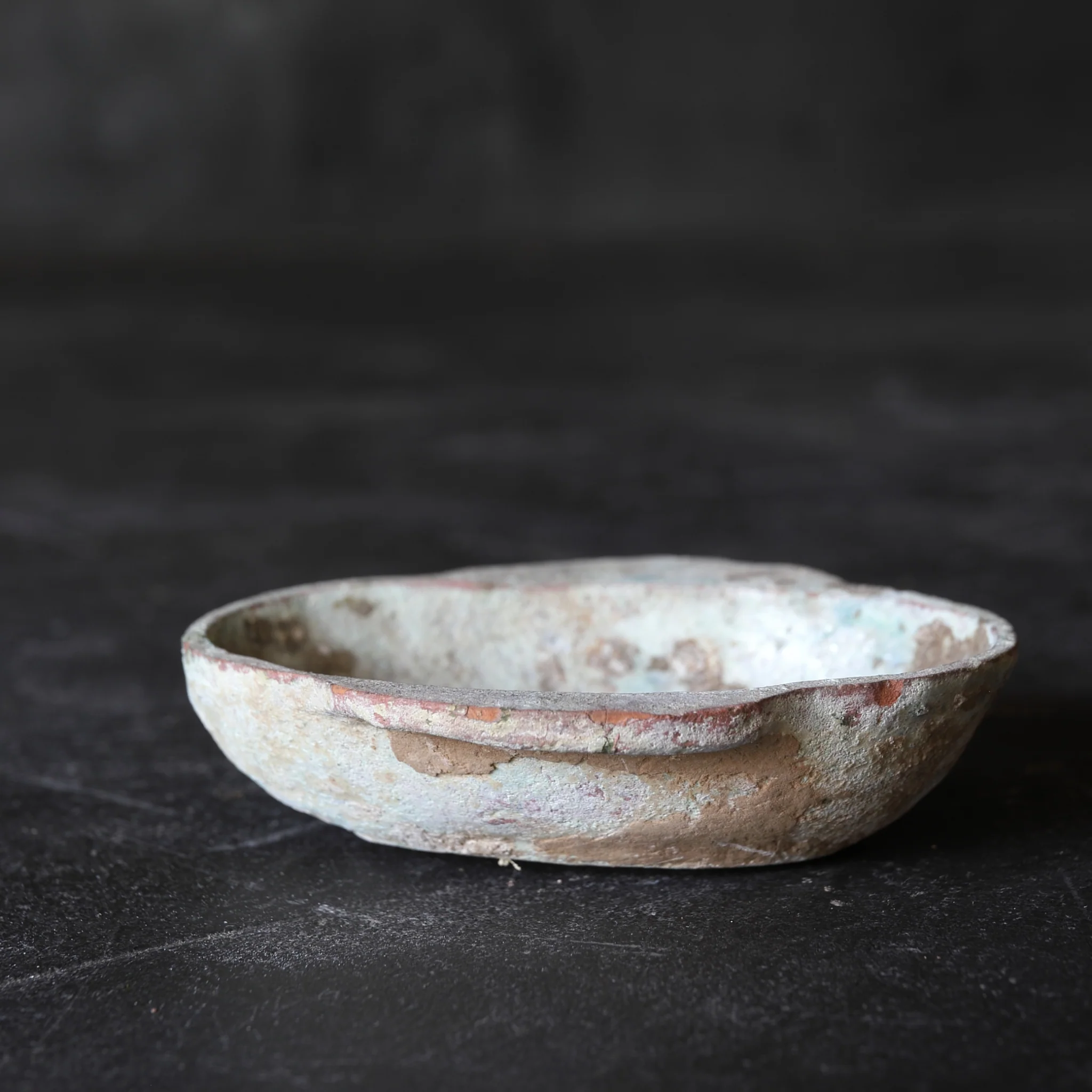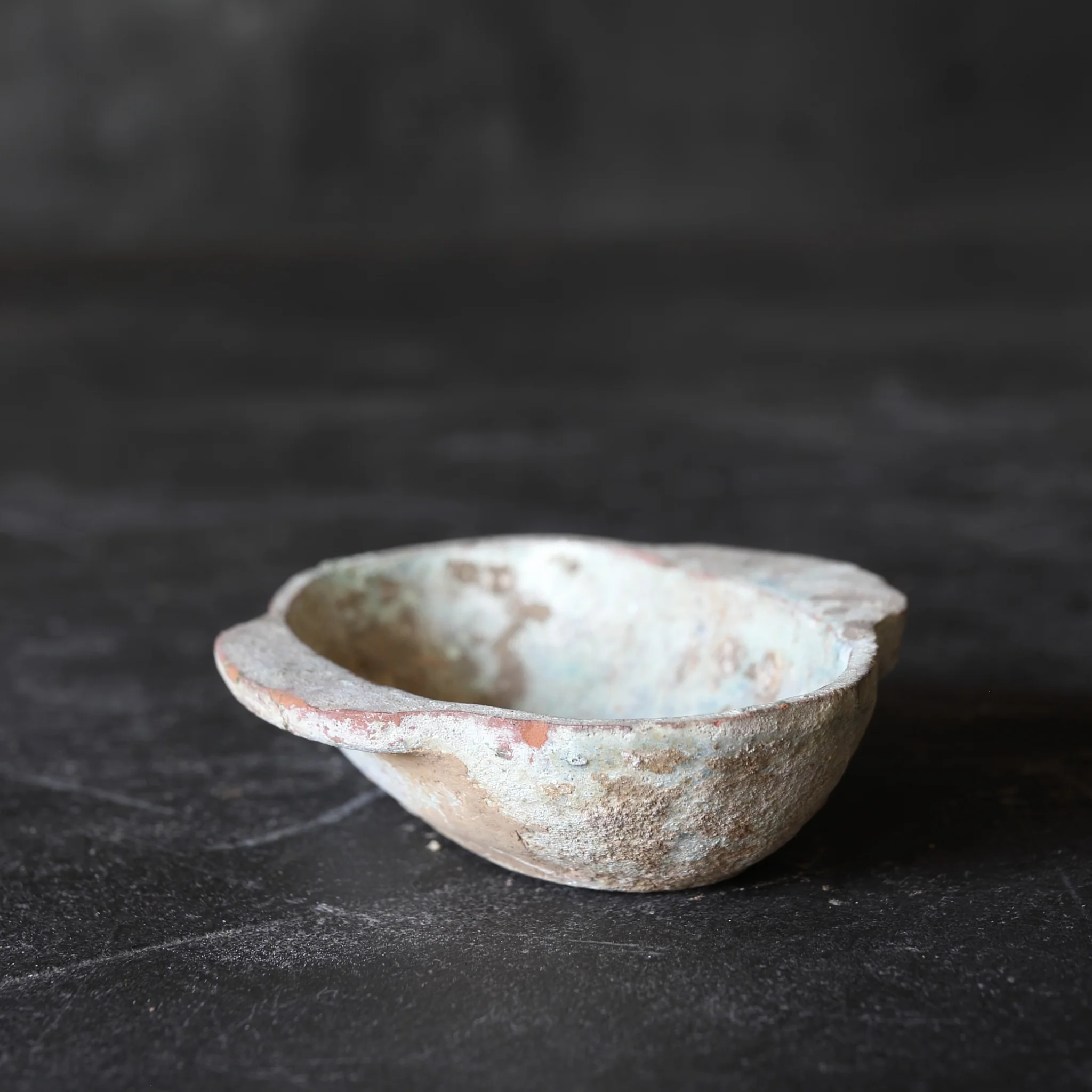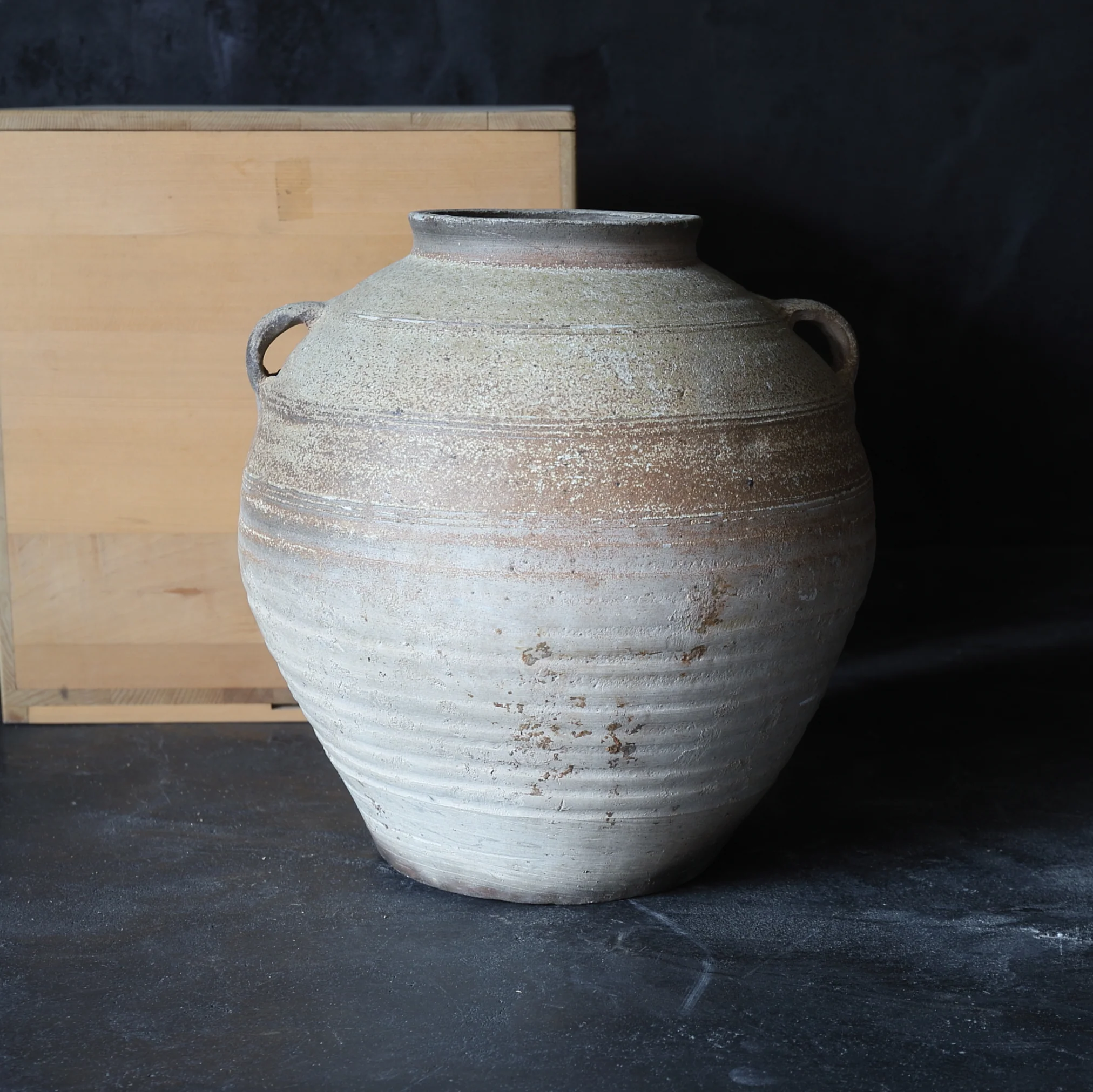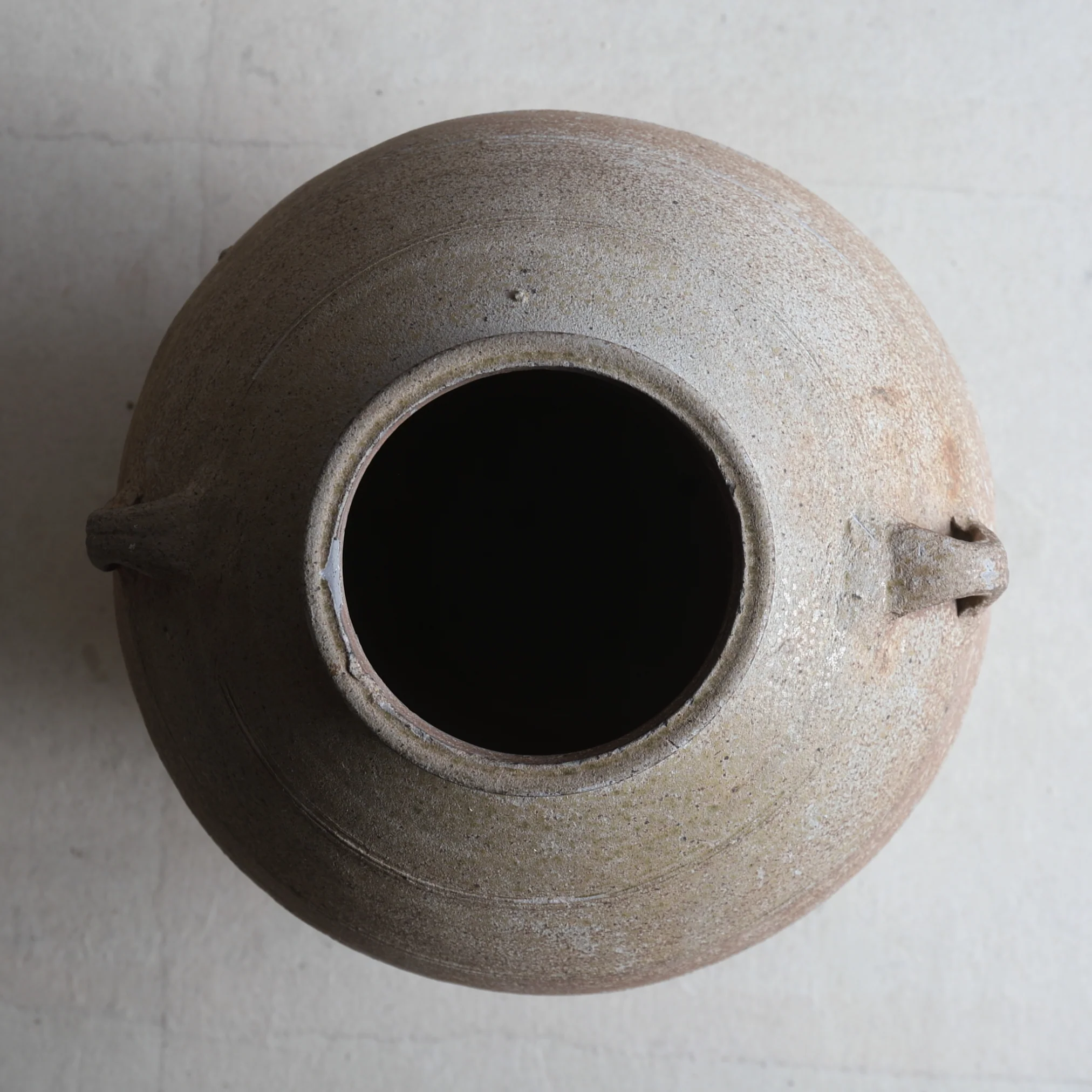


































Tang Xizhou kiln double-eared cup Tang Dynasty/618-907CE
Tax excluded. Shipping calculated at checkout
Xingzhou kilns, a representative white porcelain kiln of the Tang dynasty, are said to have been located near Neiqiu County, Xingzhou, Hebei Province, China, and reached their peak in the late Tang dynasty (8th to 9th centuries). The white porcelain of Xingzhou kilns is thought to have become the foundation of later Ding ware white porcelain, and together with the celadon of Yuezhou kilns, it was praised as the finest ceramics of the time.
This twin-eared cup has small but elegant handles on both sides and has a refined beauty of form. It is coated with a slightly yellowish milky white glaze, a characteristic of Xingzhou ware, and emits a pale, translucent beauty. In addition, the lack of decoration and the simple yet tranquil atmosphere are also well representative of the style of Xingzhou ware.
Many of the white porcelains from Xingzhou ware are made with a semi-permeable white glaze on a light brown clay with little iron content, and this double-eared cup is made using the same technique. Therefore, the glazed parts are smooth and beautiful, while the unglazed bottom part retains the rough texture of the base. The Tang Dynasty tea document "Cha Jing" also praises the white porcelains from Xingzhou ware as "snow-white," which suggests that they were special vessels for the people of that time.
The twin-eared cups from Xingzhou ware continue to shine through the ages. Please enjoy their tranquil and elegant beauty.
This twin-eared cup has small but elegant handles on both sides and has a refined beauty of form. It is coated with a slightly yellowish milky white glaze, a characteristic of Xingzhou ware, and emits a pale, translucent beauty. In addition, the lack of decoration and the simple yet tranquil atmosphere are also well representative of the style of Xingzhou ware.
Many of the white porcelains from Xingzhou ware are made with a semi-permeable white glaze on a light brown clay with little iron content, and this double-eared cup is made using the same technique. Therefore, the glazed parts are smooth and beautiful, while the unglazed bottom part retains the rough texture of the base. The Tang Dynasty tea document "Cha Jing" also praises the white porcelains from Xingzhou ware as "snow-white," which suggests that they were special vessels for the people of that time.
The twin-eared cups from Xingzhou ware continue to shine through the ages. Please enjoy their tranquil and elegant beauty.
W8.5 x D10 x H3.7 cm
商品写真を多数掲載しておりますので、詳細や状態をぜひご確認ください。ご不明な点がございましたら、お気軽にお問い合わせ下さい。
Choose options



































Tang Xizhou kiln double-eared cup Tang Dynasty/618-907CE
Sale price¥136,000 JPY






















